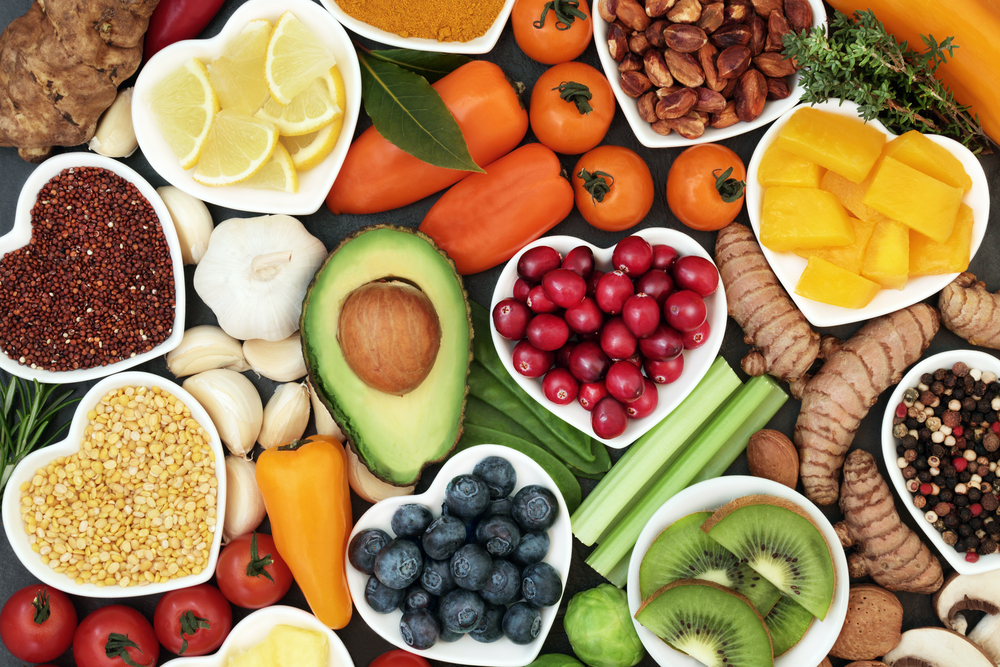
Herbs and cooking spices contain a wide variety of antioxidants, minerals, and vitamins. Anti-inflammatory foods help maximize the nutrient density of your meals. Every time you flavor your meals with herbs or spices, you upgrade your food without adding a single calorie.
In fact, on a per gram fresh weight basis, herbs rank even higher in antioxidant activity than fruits and vegetables. These are known to be high in antioxidants. Many studies have also shown that most spices tend to have unique medicinal qualities.
In the featured study, researchers from three Universities devised an experiment. It is to evaluate the true world benefits of herbs and spices. Feeding them to people in quantities is typically consumed simply by spicing up your meals. As noted by Dr. Michael Greger MD:
“The researchers could have taken the easy route and just measured the change in antioxidant level in one’s bloodstream before and after consumption, but the assumption that the appearance of antioxidant activity in the blood is an indication of bioavailability has a weakness.
Maybe more gets absorbed than we think but doesn’t show up on antioxidant tests because it gets bound up to proteins or cells. So the researchers attempted to measure physiological changes in the blood.
They were interested in whether absorbed compounds would be able to protect white blood cells from an oxidative or inflammatory injury—whether herb and spice consumption would protect the strands of our DNA from breaking when attacked by free radicals.”
Four Spices That Pack a Powerful Anti-Inflammatory Punch
For one week, 10 to 12 subjects in each of the 13 groups consumed a small amount of a particular spice each day. For example, those in the oregano group ate just half a teaspoon of oregano daily for seven days. Drawing blood samples one hour before consumption, and at the very end of the experiment. They are examining participants’ blood for antioxidant capacity. The researchers also analyzed how well the blood could dampen an induced inflammatory response in white blood cells.
The researchers tested this by placing participants’ blood onto white blood cells damaged by oxidized cholesterol (commonly found in fried foods). Even at everyday dosage levels, four spices significantly reduced the inflammatory response.
1. Cloves
2. Ginger
3. Rosemary
4. Turmeric
As noted in the featured article:
“[T]he results represent what might happen when cells in our body encounter the levels of spices that circulate in our bloodstream after normal daily consumption—not megadoses in some pill. Just the amount that makes our spaghetti sauce, pumpkin pie, or curry sauce taste good.”
Other Potent Anti-Inflammatory Foods
An earlier study published in the Journal of Medicinal Foods found a direct correlation between the antioxidant phenol content of spice and herb extracts and their ability to inhibit glycation and block the formation of AGE compounds (advanced glycation end products), making them potent preventers of heart disease and premature aging.
Cloves top the list as the most potent among 24 common anti-inflammatory spices found in your kitchen. Overall, the following ranked as the top 10 most powerful anti-inflammatory herbs and spices:
- Cloves
- Cinnamon
- Jamaican allspice
- Apple pie spice mixture
- Oregano
- Pumpkin pie spice mixture
- Marjoram
- Sage
- Thyme
- Gourmet Italian spice
Inflammation Is at the Heart of Most Chronic Diseases
It’s important to realize that chronic inflammation is the source of many if not most diseases, including cancer, obesity, and heart disease, which essentially makes it the leading cause of death in the US.
While inflammation is a perfectly normal and beneficial process that occurs when your body’s white blood cells and chemicals protect you from foreign invaders like bacteria and viruses, it leads to trouble when the inflammatory response gets out of hand. Your diet has a lot to do with this chain of events.
While among the most potent, ounce for ounce, herbs and spices are certainly not the only anti-inflammatory ingredients available. Several foods are well-known for their anti-inflammatory properties, and making sure you’re eating a wide variety of them regularly can go a long way toward preventing chronic illness.
Top Seven Anti-Inflammatory Foods
The following anti-inflammatory foods deserve special mention for their ability to quell inflammatory responses in your body:
| 1. Animal-based omega-3 fat | Animal-based omega-3 fats—found in fatty fish like wild Alaskan salmon and fish- or krill oil—help fight inflammation throughout your body. It’s particularly important for brain health. Research published in the Scandinavian Journal of Gastroenterology in 2012 confirmed that dietary supplementation with krill oil effectively reduced inflammation and oxidative stress. |
| 2. Leafy greens | Dark leafy greens such as kale, spinach, collard greens, and Swiss chard contain powerful antioxidants, flavonoids, carotenoids, and vitamin C—all of which help protect against cellular damage. Ideally, opt for organic locally grown veggies that are in season, and consider eating a fair amount of them raw. Juicing is an excellent way to get more greens into your diet. |
| 3. Blueberries | Blueberries rate very high in antioxidant capacity compared to other fruits and vegetables. They are also lower in sugar than many other fruits. |
| 4. Tea | Matcha tea is the most nutrient-rich green tea and comes in the form of a stone-ground unfermented powder. The best Matcha comes from Japan and has up to 17 times the antioxidants of wild blueberries, and seven times more than dark chocolate. Tulsi is another tea loaded with anti-inflammatory antioxidants and other micronutrients that support immune function and heart health. |
| 5. Fermented vegetables and traditionally cultured foods | Optimizing your gut flora is important for a well-functioning immune system, and helps ward off chronic inflammation. The majority of inflammatory diseases start in your gut, as the result of an imbalanced microbiome. Fermented foods such as kefir, natto, kimchee, miso, tempeh, pickles, sauerkraut, olives, and other fermented vegetables, will help ‘reseed’ your gut with beneficial bacteria. Fermented foods can also help your body rid itself of harmful toxins such as heavy metals and pesticides that promote inflammation. |
| 6. Shiitake mushrooms | Shiitake mushrooms contain strong compounds with the natural ability to discourage inflammation, such as Ergothioneine, which inhibits oxidative stress. They also contain several unique nutrients that many do not get enough of in their diet. One is copper, which is one of the few metallic elements accompanied by amino and fatty acids that are essential to human health. Since your body can’t synthesize copper, your diet must supply it regularly. Copper deficiency can be a factor in the development of coronary heart disease. |
| 7. Garlic | Garlic has been treasured for its medicinal properties for centuries. It’s also one of the most heavily researched plant foods around. Over 170 studies show it benefits more than 150 different conditions. Garlic exerts its benefits on multiple levels, offering anti-bacterial, anti-viral, anti-fungal, and antioxidant properties. It’s thought that much of garlic’s therapeutic effect comes from its sulfur-containing compounds, such as allicin. Research has revealed that as allicin digests in your body it produces sulfenic acid, a compound that reacts faster with dangerous free radicals than any other known compound. |
Your Diet Is Key for Reducing Chronic Inflammation
The running thread linking a wide variety of common health problems—from obesity and diabetes to heart disease and cancer—is chronic inflammation. The key to reducing chronic inflammation in your body starts with your diet, and being liberal in your use of high-quality herbs and spices is one simple way to boost the quality of your food. They’re an inexpensive “secret weapon” that just about everyone can take advantage of. Spicing up your meals is not enough, however, if processed foods comprise the bulk of your diet.
It’s important to realize that dietary components can either prevent or trigger inflammation from taking root in your body, and processed foods do the latter, courtesy of pro-inflammatory ingredients like high fructose corn syrup, soy, processed vegetable oils (trans fats), and other chemical additives. Besides adding anti-inflammatory foods to your diet, you’ll also want to avoid the following pro-inflammatory dietary culprits as much as possible:
- Refined sugar, processed fructose, and grains. If your fasting insulin level is three or above, consider dramatically reducing or eliminating grains and sugars until you optimize your insulin level, as insulin resistance is a primary driver of chronic inflammation. As a general guideline, I recommend restricting your total fructose intake to 25 grams per day. If you’re insulin or leptin resistant (have high blood pressure, high cholesterol, heart disease, or are overweight), consider cutting that down to 15 grams per day until your insulin/leptin resistance has normalized
- Oxidized cholesterol (cholesterol that has gone rancid, such as that from overcooked, scrambled eggs)
- Foods cooked at high temperatures, especially if cooked with vegetable oil (such as peanut, corn, and soy oil)
- Trans fats
Replacing processed foods with whole, ideally, organic foods will automatically address most of these factors, especially if you eat a large portion of your food raw. Equally important is making sure you’re regularly reseeding your gut with beneficial bacteria, as mentioned above. To help you start on a healthier diet, I suggest following my free Optimized Nutrition Plan. It starts at the beginner phase and systematically guides you step by step to the advanced level.


